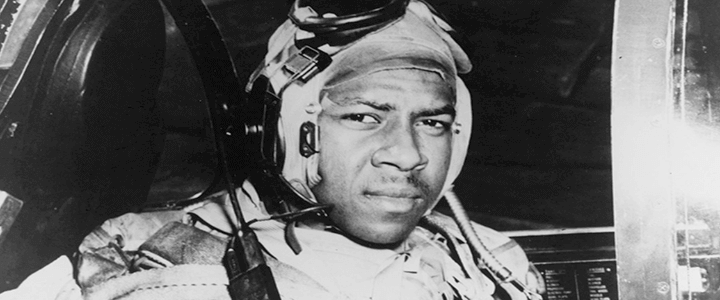For Memorial Day, I would go on about how too many people dismiss the day as just a three-day weekend to mark the start of summer, or confuse it with Veterans Day. Don’t thank me today, I used to say, thank the people buried in battlefield graveyards around the world.
But rather than engage in any further “vetsplaining,” let me instead the you the story of two battle buddies, one of whom it was my honor and privilege to have met on a few occasions, and one who died on the field of battle in 1950. Their story is something that should long ago have been made into an epic movie with blockbuster stars. But since Korea is often called “The Forgotten War,” many people have not heard the story.
Privilege Meets Determination
Lieutenant Thomas Hudner was born of privilege, the son of a Fall River, Mass. merchant who owned a chain of grocery stores. Hudner attended the elite Phillips Academy in Andover, graduating in 1943, a year after another Naval aviator, President George H.W. Bush. Rather than forestall his college career like Bush, Hudner entered the U.S. Naval Academy, graduating in 1947. He earned his aviators’ wings in 1949.
Ensign Jesse Brown, by contrast, was from Hattiesburg, Miss. He overcame the inherent racism of the time not only to attend The Ohio State University, but to gain entrance into the “V-5 Naval Aviation Cadet program.” In 1948, he became the Navy’s first African-American pilot.
In the autumn of 1949, in the pilots’ locker room at the Quonset Point Naval Air Station in Kingstown, R.I., Brown and Hudner were both changing out of their flight suits. Aware of Brown’s isolation, Hudner crossed the room to shake his hand, and a team was born.
Hudner was senior in rank, but Brown had more flying hours, so he served as a section leader aboard the aircraft carrier U.S.S. Leyte, with Hudner flying as his wingman. When war broke out on the Korean Peninsula in 1950, the Leyte was dispatched to support operations; Hudner and Brown were about to fly into history.
Defending the Frozen Chosin
By October of 1950, North Korean forces had driven the defending American and British into a defensive perimeter around the southern city of Pusan (now called Busan). While those troops desperately held the “Pusan Perimeter,” General of the Army Douglas MacArthur led the surprise amphibious assault at Inchon, west of the capital of Seoul.
This landing, hundreds of miles behind the lines, allowed the United Nations forces to break out of the perimeter and push the North Koreans all the way up the peninsula to the Yalu River, which forms Korea’s border with China. This proved too much for Chinese leader Mao Zedong to tolerate, and he ordered the Red Chinese forces into action in late November.
The main confrontation between U.S. and Chinese forces occurred in the area of the Chosin Reservoir —ever since known as the “Frozen Chosin” because of the bitterly cold temperatures — where 30,000 allied Soldiers and Marines were surrounded by at least 120,000 Chinese soldiers. Brown lead Hudner and four other pilots into his desperate fight on December 4, 1950.
While you can read in many places what came next, I assure you none of them come close to hearing Tom Hunder tell the story in person.
A desperate, futile effort
Brown’s plane was hit by small arms fire from the ground, and began to lose power; he was forced to crash land in a relatively flat spot on the side of a mountain. While his comrades were sure the impact had killed him, Hudner flew past to see the F4U-4 Corsair’s canopy open, and Brown waving from the cockpit. But he wasn’t getting out of the aircraft, despite the smoke that was pouring from beneath the engine cowling.
Hudner decided he needed to rescue his wingman, so he landed his own plane, wheels up, in the deep snow, near to Brown’s downed aircraft. He found that Brown’s leg was pinned between the control panel and fuselage. Using his radio to speak to the incoming Marine helicopter, he requested a fire extinguisher and an axe.
But the hatchet would prove no match for the to the Corsair’s metal fuselage. Hudner was unable free Brown from the wreckage, and with darkness approaching, he had no choice but to leave his now-unconscious wingman behind. Fighters returned the following day to drop napalm on the site to prevent the desecration of Brown’s body.
Ensign Jesse Brown, the Navy’s first African-American aviator, also became the first black combat death of the Korean War. Lieutenant Tom Hunder, the first sailor to earn the Medal of Honor in Korea, died last November at his home in Concord, Mass. Hudner retired from the Navy as a captain in 1973, but not before attending the commissioning of the Knox-class frigate U.S.S. Jesse L. Brown at the Charlestown Navy Yard in Boston.
Later this year, the Navy will commission DDG-116, the U.S.S. Thomas Hudner, an Arleigh Burke-class Guided Missile Destroyer built at the Bath Iron works in Maine.
Enjoy your day off, America. But please pause to reflect on those honored dead who made it possible.




